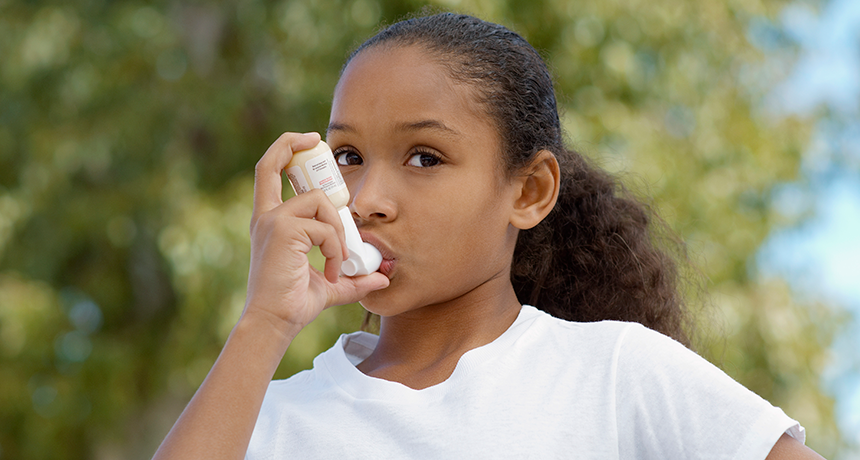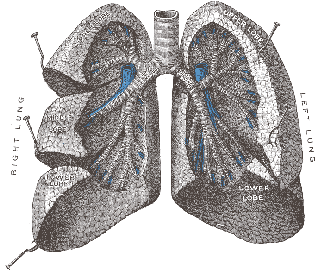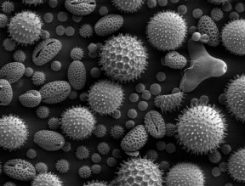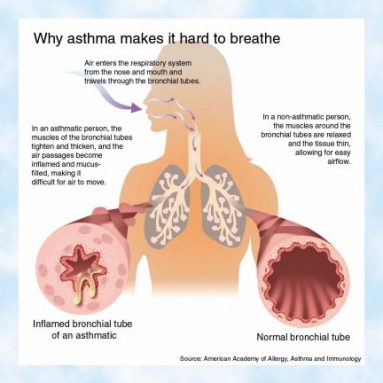Attacking Asthma
Most kids with asthma no longer have to limit their activities.

Asthma can make it hard to breathe, so many doctors prescribe inhalers that deliver medicines to open lung passageways.
IPGGutenbergUKLtd/iStockphoto
By Emily Sohn
One minute, you’re breathing normally. The next minute, you’re coughing, wheezing, and gasping for air. Maybe the trouble started when you stroked a cat. Or maybe it happened when you raced for a soccer ball on a breezy spring day.
If these situations sound familiar, you may be among the growing number of kids with a lung disorder called asthma.
“It’s very common for kids to have this,” says Andy Liu, a childhood asthma-and-allergy researcher at the National Jewish Medical and Research Center in Denver. And, he says, asthma is becoming more and more common.
Between 1980 and 1996, the number of asthma cases doubled in the United States. Today, more than 20 million adults and about 9 million kids have asthma, according to the Centers for Disease Control and Prevention.
“When I was a kid, one or two kids in our class had it,” Liu says. “Now, five or six kids in a class do.”
While the exact reason for the increase remains a mystery, scientists are discovering patterns and zeroing in on explanations. New tests for the disease are in the works. And treatments have improved tremendously.
“We used to think of kids with asthma as being limited,” Liu says. “That’s changed in the last 15 years. We believe most kids [with asthma] can live normal lives now.”
Lung passages
Inside your chest, your lungs are like a tree with hollow branches. These branches serve as airways. When you take a breath, air moves into these branches. It then passes through the thin lining of the lungs and delivers oxygen to your bloodstream.
 |
|
Air travels along passageways in the lungs to deliver oxygen to the blood.
|
During an asthma attack, a thick, slippery substance called mucus blocks the lung passages, swelling occurs, and lung muscles squeeze on the airways. Breathing becomes difficult.
Such episodes don’t usually happen out of the blue. At least half of the people who suffer from asthma have allergies that can trigger an attack, says Sam Arbes. He’s an epidemiologist at the National Institute of Environmental Health Sciences in Research Triangle Park, N.C.
Allergies occur when your immune system, which is designed to protect your body against infection and disease, overreacts to cat hair, mold, pollen, dust, or other foreign substances. Such substances are called allergens.
Some people merely sneeze and sniffle when they’re exposed to certain allergens. People with asthma have a much stronger reaction. In some cases, they end up in the hospital.
To figure out whether an increase in allergens is responsible for the increase in asthma, Arbes and his colleagues recently collected dust from 831 homes throughout the United States.
“We found cat and dog allergens in every home we sampled—even in homes that didn’t have cats or dogs,” Arbes says. “A lot of homes had levels high enough to cause allergies and asthma in people.”
Pollutant triggers
There’s more to the story than Fluffy’s or Fido’s hair, however. Scientists know that for some people with asthma, the disorder has nothing to do with allergies. Asthma triggers can include, for example, exercise, cigarette smoke, perfumes, and cooking odors.
 |
|
This image, magnified 500 times, shows pollen from a variety of common plants, including the sunflower, morning glory, hollyhock, lily, evening primrose, and castor bean. Some people are allergic to certain types of pollen.
|
| Rippel Electron Microscope Facility |
Scientists are, however, pretty confident that allergies do make asthma worse, Arbes says. But, he adds, “we don’t know if exposure [to allergens] is what actually causes people to get asthma in the first place.”
To understand better why only certain people develop the disease, scientists are gathering information about the types of allergens that people are exposed to at home and about the types of allergies that they have. The work is part of a huge, long-term study called the National Health and Nutrition Examination Survey (NHANES).
The study isn’t complete, but scientists have already identified some patterns. Kids living on farms get asthma less often than kids in cities do. Preschoolers in day care are less likely to have asthma than toddlers who stay home. And kids with older brothers and sisters have less asthma than kids who grow up alone.
Based on these trends, a theory called the “hygiene hypothesis” is gaining ground. The idea is that kids today encounter fewer types of bacteria than their parents did. That’s because they spend more time inside, use more antibacterial soaps, and take more antibiotic medicines.
As a result, the part of their immune systems that’s designed to fight infection doesn’t have enough to do, Arbes says. The part that’s involved in allergies takes over.
“The immune system gets fired up to fight allergens rather than pathogens or bacteria,” he says.
Better care
Figuring out what causes asthma might help researchers find ways to prevent it. Eventually, they hope to find a cure. Until then, doctors are working on managing the condition. And they’re getting pretty good at that, Liu says.
 |
|
Asthma hasn’t kept Jerome Bettis of the Pittsburgh Steelers from becoming a great athlete.
|
| Hello Pittsburgh |
Identifying and avoiding asthma triggers is one good preventive strategy. Medications can help manage the disease. Taken through inhalers, these medicines relax the lung muscles and bring immediate relief.
Meanwhile, a new test is coming that can diagnose asthma by sampling a person’s breath, Liu says. The test could lead to earlier diagnoses and better care.
“A lot of kids limit their activities because of asthma,” Liu says. “It doesn’t have to be that way.”
“If you have asthma, you should expect your life to be normal,” he adds. “You should be able to have minimal symptoms. You should be able to pick the sport of your choice and play at the level you want to.”
Have any doubts? Just look at football player Jerome “The Bus” Bettis of the Pittsburgh Steelers. Asthma hasn’t stopped him from being a great athlete.
 |
| American Academy of Allergy, Asthma & Immunology |
Going Deeper:
Comments:
Asthma is a very common disease. I know a few friends who have asthma. I
don’t have asthma but if I am not mistaken, asthma can be caused by many
different causes. Asthma can be caused by pollution. These friends I have live in
polluted streets. I know a girl that had asthma and she was cured.—Kimberly, 11







